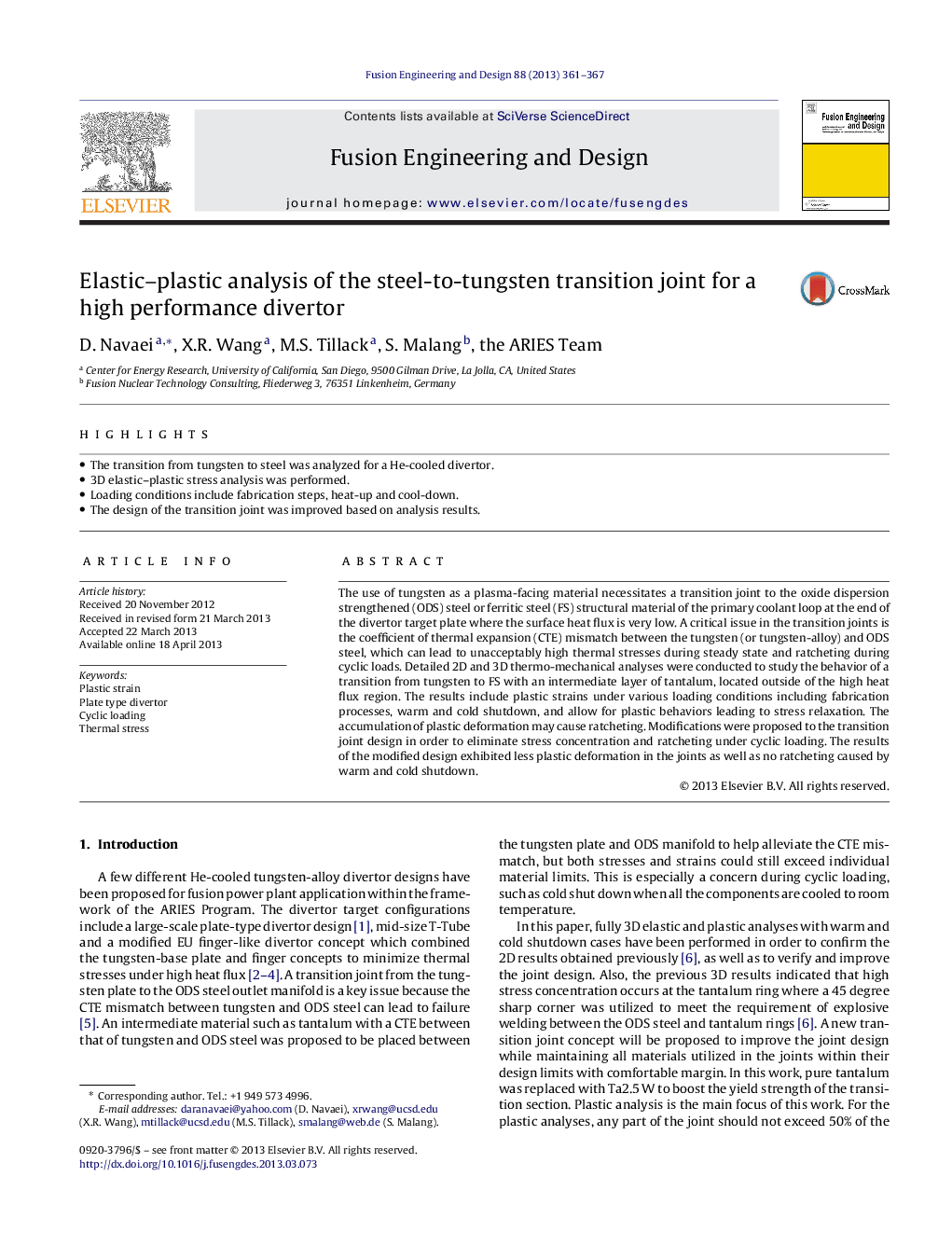| Article ID | Journal | Published Year | Pages | File Type |
|---|---|---|---|---|
| 271600 | Fusion Engineering and Design | 2013 | 7 Pages |
•The transition from tungsten to steel was analyzed for a He-cooled divertor.•3D elastic–plastic stress analysis was performed.•Loading conditions include fabrication steps, heat-up and cool-down.•The design of the transition joint was improved based on analysis results.
The use of tungsten as a plasma-facing material necessitates a transition joint to the oxide dispersion strengthened (ODS) steel or ferritic steel (FS) structural material of the primary coolant loop at the end of the divertor target plate where the surface heat flux is very low. A critical issue in the transition joints is the coefficient of thermal expansion (CTE) mismatch between the tungsten (or tungsten-alloy) and ODS steel, which can lead to unacceptably high thermal stresses during steady state and ratcheting during cyclic loads. Detailed 2D and 3D thermo-mechanical analyses were conducted to study the behavior of a transition from tungsten to FS with an intermediate layer of tantalum, located outside of the high heat flux region. The results include plastic strains under various loading conditions including fabrication processes, warm and cold shutdown, and allow for plastic behaviors leading to stress relaxation. The accumulation of plastic deformation may cause ratcheting. Modifications were proposed to the transition joint design in order to eliminate stress concentration and ratcheting under cyclic loading. The results of the modified design exhibited less plastic deformation in the joints as well as no ratcheting caused by warm and cold shutdown.
